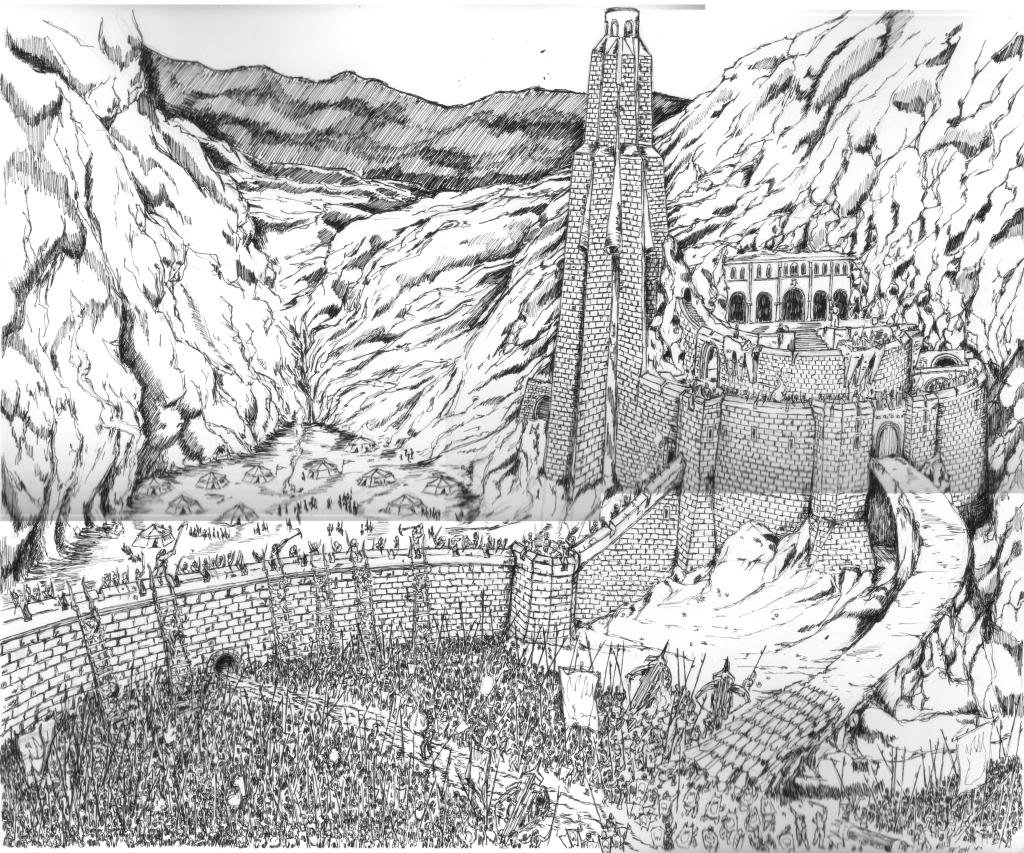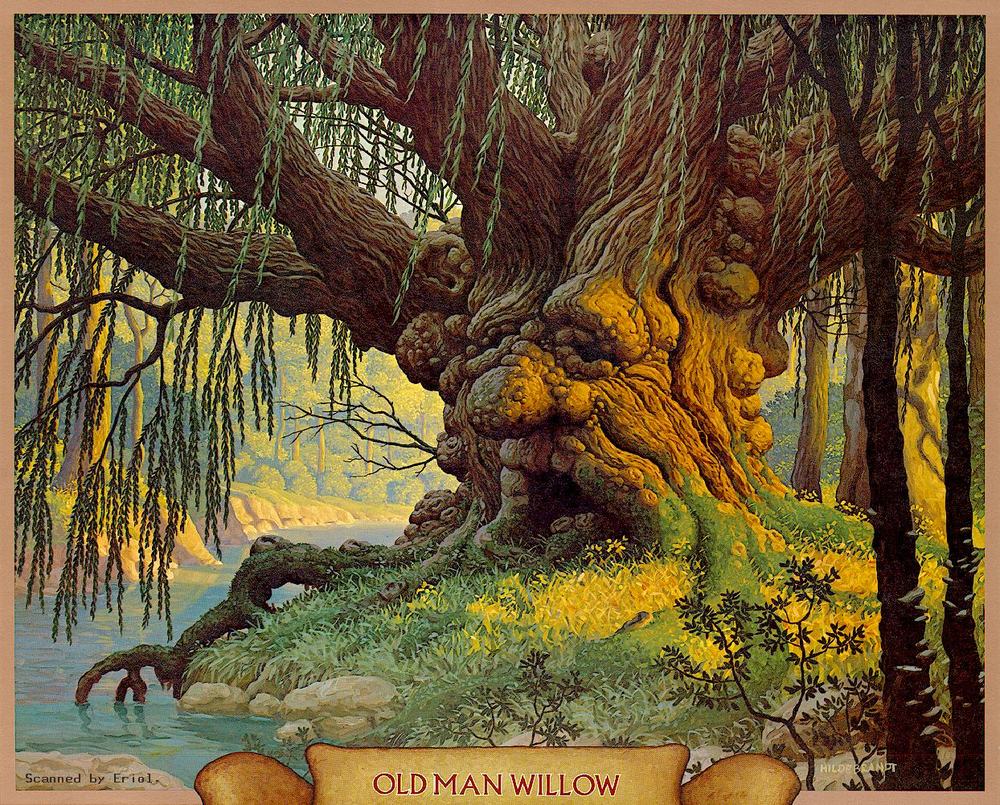Raghu, who is 8 years old and was for a while behind in learning to read, is plugging away at his one-volume, pictureless, fine-print version of Tolkien's LOTR trilogy. He is now finishing "The Two Towers" and decided to draw a map of Rohan for his Book Response Activity this week. Here it is:
Friday, March 21, 2014
Raghu is still reading "The Lord of the Rings"
Raghu, who is 8 years old and was for a while behind in learning to read, is plugging away at his one-volume, pictureless, fine-print version of Tolkien's LOTR trilogy. He is now finishing "The Two Towers" and decided to draw a map of Rohan for his Book Response Activity this week. Here it is:
Rasa's Illustration of "The Golden One" from "Anthem" by Ayn Rand
This week Rasa read "Anthem" by Ayn Rand. She drew a picture of how she imagined the Golden One to look while she was working in the field. You can see other nameless women in the background, bent double, while the Golden One stands tall. This is what she was trying to convey. She wanted to have the girl and the forest lit with sunlight while the left side of the picture was darker. That was hard to achieve, but even in the scanned version you can see it a bit. For those who have not read the book (and those who have), here is Rush's take on it:
And here is Rasa's illustration:
And here is Rasa's illustration:
Wednesday, March 19, 2014
Adding more to this blog
Because it is primarily a way for me to look back at the kids' schoolwork, I have decided to add the kids' online school assignments too. I just added a few items Hanuman and Vidura finished recently. And here is cute Anjali selling Girl Scout Cookies.
Vidura's advice to Raghu
Vidura had to write a "Letter of Advice."
Dear Raghu,
I heard you were going to Connections Academy and I wanted
to help.
First, there’s a box named to-do-list-which allows you to
access your overdue lessons and it shows you if you have any new webmails.
Under the to-do-list is your daily planner which to me is like my school
checklist because when you’re done with all the things on your planner you’re
done for the day.
I hope this helps.
Sincerely yours,
Vidura
Vidura
Vidura's Cardinal Story
One day I went outside
and saw a cardinal sitting on a branch. I looked down from the branch to the
ground underneath. The cardinal’s nest had fallen. I went back inside. As the
cardinal flew I watched it from my bedroom window. It went back and forth carrying,
bits of mud, twigs and leaves using them to build a new nest. When it was done
it laid eggs then it flew of. Well it was gone little cracks started to appear
on the eggs and then the eggs broke one after another until there were for
little chicks sitting there and then the cardinal was back with four worms
which it fed to the baby cardinals. It is very wonderful to watch an animal in
their natural habitat; nature is truly full of wonders.
Hanuman's Essay on The Premature Burial By Edgar Allen Poe
Imaginary
Burials
In “The Premature Burial,” Edgar
Allen Poe explores the theme of imagination. Whether because we are dreaming,
ill, beguiled by tricks, or under the influence of drugs or medication, what we
perceive is not always real, and we can become very fearful of imaginary
things. The terror experienced by the narrator of the story shows that the mind
is often stronger than we think. The narrator’s mental state is not rational,
because rather than perceiving reality for what it is, he saw his surroundings
in a small sloop’s cabin as a coffin, and he panicked at the thought of being
buried alive. Specific story elements such as the dark, close, and confined setting
in both the coffin in the narrator’s perceived reality as well as in the sloop’s
cabin in his reality inspire fear and foreboding. In paragraph two, Poe builds
suspense with this darkness, and the narrators feeling of being unable to move,
being trapped, while those around him move freely and separately from himself. The
men on the ship, while not comforting, still provided immense relief as they
show that the coffin is not real, but just a figment of imagination. The coffin
represents imagination or hallucination, and the characters such as the men on
the ship represent our reality, true, not always pleasant, but very much real,
helping the narrator to gain a sense of balance upon awakening after what he
perceives to be his burial. Both the setting and symbolism are essential in
developing the theme because they show the contrast between the dark unknown
and surrealism of the man’s imagination against the reality of the trip on the
boat.
The theme in “The Premature Burial”
is very similar to that of “A Telltale Heart”, another story by Poe. Both
stories involve the character’s mind tricking itself into believing something
unreal and dreamlike, even while awake. The narrator of “The Telltale Heart” is
different than that of “The Premature Burial” because he is by far more mad,
and his madness led him to murder an old man, after which he believes he can
hear the man’s heart beating under the floorboards where he hid the body. So it
is not himself being buried alive that he fears, but the old man. Of course,
the beating is not real, but imaginary. This all ties into the theme of mind
overpowering reality, and in both stories, Poe uses themes of fear, death,
despair, madness, entrapment, and imagination. While in “The Telltale Heart”
the protagonist actually committed terrifying acts, which consume his mind, in
“The Premature Burial,” the terror is not at all real, and entirely in his
mind, but it is just as frightening nonetheless.
The Boarded Window
Hanu had to analyse "The Boarded Window" by Ambrose Bierce for a class assignment. You can read the story online here. Here is Hanuman's analysis:
In Ambrose Bierce’s “The Boarded
Window”, the physical setting of the story is the cabin with a boarded window
in the Mid-Western wilderness of the 1800s. The main thing that creates an
unsettling feeling is the mystery of the boarded up window, and how very few
people knew why it was boarded up, and why it remained that way. The mood that
results from the author’s description is one of ambiguity and foreboding. The
theme seems to be that people often try to lock up their secrets and grief, and
keep them inside where no one can know. In the final lines, however, an ironic
twist influences the final theme or meaning of the story by showing that we,
like the old man, may have been deceived about the woman’s death. Bierce uses
many techniques to create mystery, such as the unreliable narrator, who uses
words like “perhaps” and “apparently” in almost every sentence, as well as
Murdock’s mental state and the darkness itself, which don’t allow Murdock or us
to see what is really happening. I was surprised by the twist, but not shocked,
because even the twist is uncertain and unfulfilling. The reader does not have
enough information to be sure if the wife was alive the whole time, in a coma
which she woke from when attacked by the panther, or when, if ever, she fought
with the animal and bit its ear. Did it happen before Murdock woke up, or after
he fired his rifle and lost consciousness again? In reading the story, my main
feeling was sadness for the man, who we know lived a long and lonely life.
Afterward, the impossibility of knowing what really happened made me think of
the story again and again, but then finally give up unsatisfied.
Morgan freeman reviews "Eye Contact"
For school Hanuman had to record himself reading his review of this short film. He decided to use his Morgan Freeman voice to read it. Probably spiced up his teacher's day a little, grading assignments. He got an A.
Monday, March 17, 2014
The Lord of the Rings
Raghu’s book response activity
for book 1 of The Lord of the Rings by
JRR Tolkien. Book one is the first part of The Fellowship of the Ring, up to
Rivendell.
Today I am going to
make a list of things that are wrong in the movie:
The first thing is that the movie does not mention
Tom Bombadil.
The
second thing is that it does not mention Furno and his pony.
The
third thing is that the elf who comes to help them get to Rivendell is not a
girl, and they spot him- he doesn’t spot them.
The
fourth thing that I want to say is that Frodo is on the horse by himself, not
with the elf.
The
fifth thing I want to say is that it was Frodo who made the river flood, not
the elf.
Sunday, March 16, 2014
Subscribe to:
Comments (Atom)








